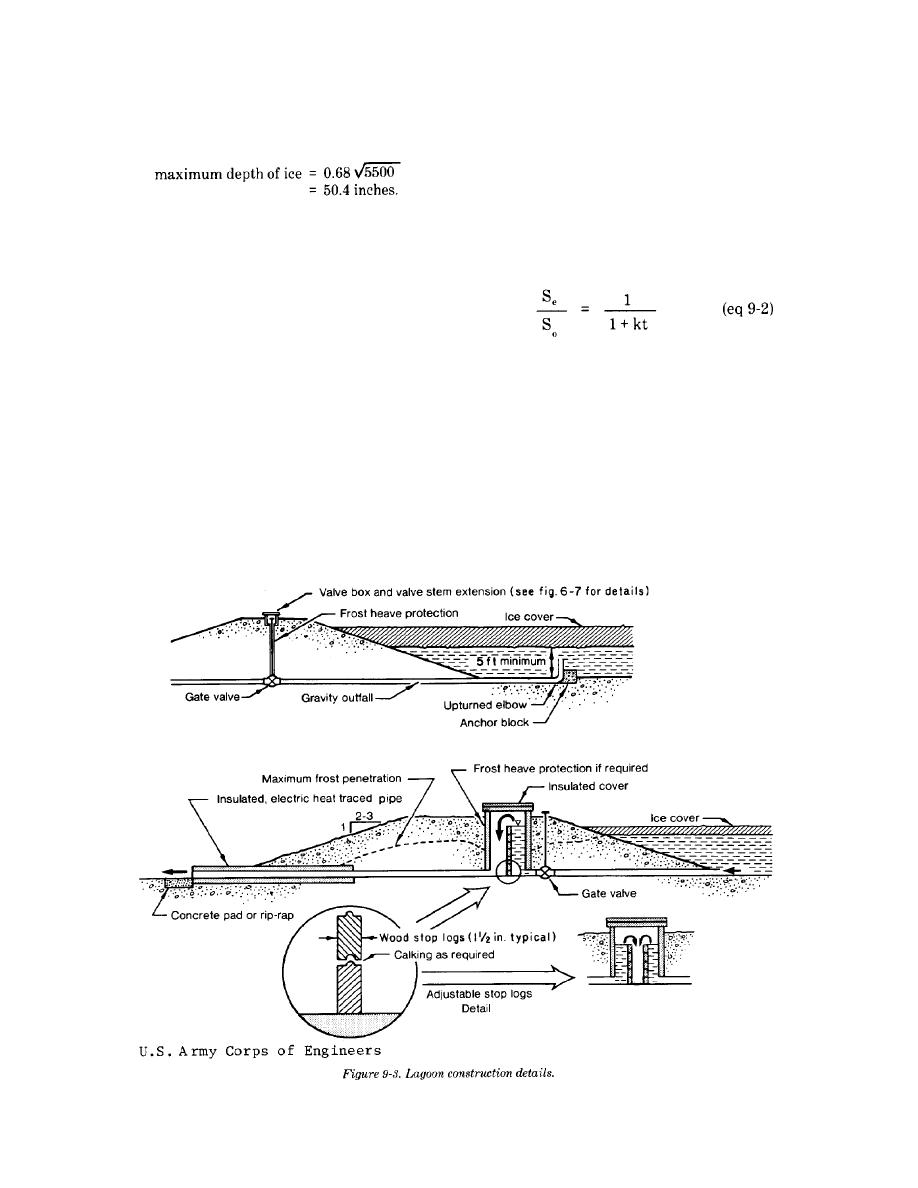
TM 5-852-5/AFR 88-19, Volume 5
For example, if Fairbanks, Alaska, has a mean air
manhole concept as shown in this figure will permit
freezing index of 5500Fd, and a moderate snow
easy control of depth in the lagoon cells and is an
cover on the lagoon is assumed, then the
alternative to adjustable weirs.
(2) Aerated lagoons. Partially mixed aerated
lagoons, also called facultative-aerated ponds, have
been used successfully in cold regions. They require
See section 12, paragraphs 9a and b for additional
less land area, but more energy and more op-
detail on ice formation.
erational attention than facultative lagoons. Basic
(b) Special construction features. Standard
process design criteria are similar to those of tem-
construction techniques can be used except where
perate regions. The design is based on:
permafrost is present. Fine textured, ice-rich per-
mafrost must be avoided if possible, since thawing
will result in failure, or at least require frequent
repair of dikes and berms. Lagoons may be installed
where
in permafrost that is physically stable after thawing.
Se = effluent BOD5, mg/L
Construction techniques for dikes and berms, and
the use of lining materials are essentially the same as
So = influent BOD5, mg/L
those described in chapter 5. Synthetic rubber has
t = total detention time, days
been most commonly used for lagoon liners at
military installations in Alaska (see EPA report
= V/Q
MCD 54 for additional information). Details of
V = Total volume of lagoon,
inter-basin transfer structures and outlet works are
millions of gallons (mg) or ft3
shown in figure 9-3. The use of the stop-log
9-4



 Previous Page
Previous Page
